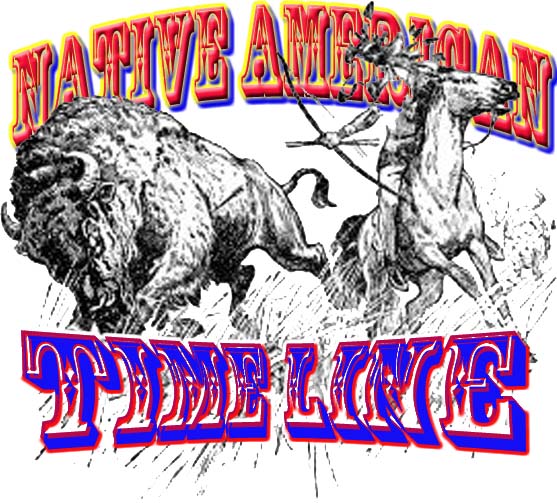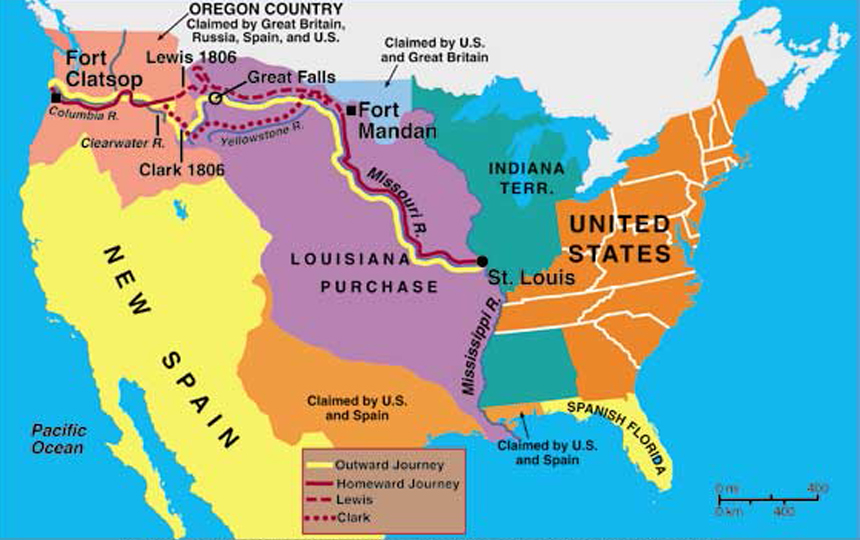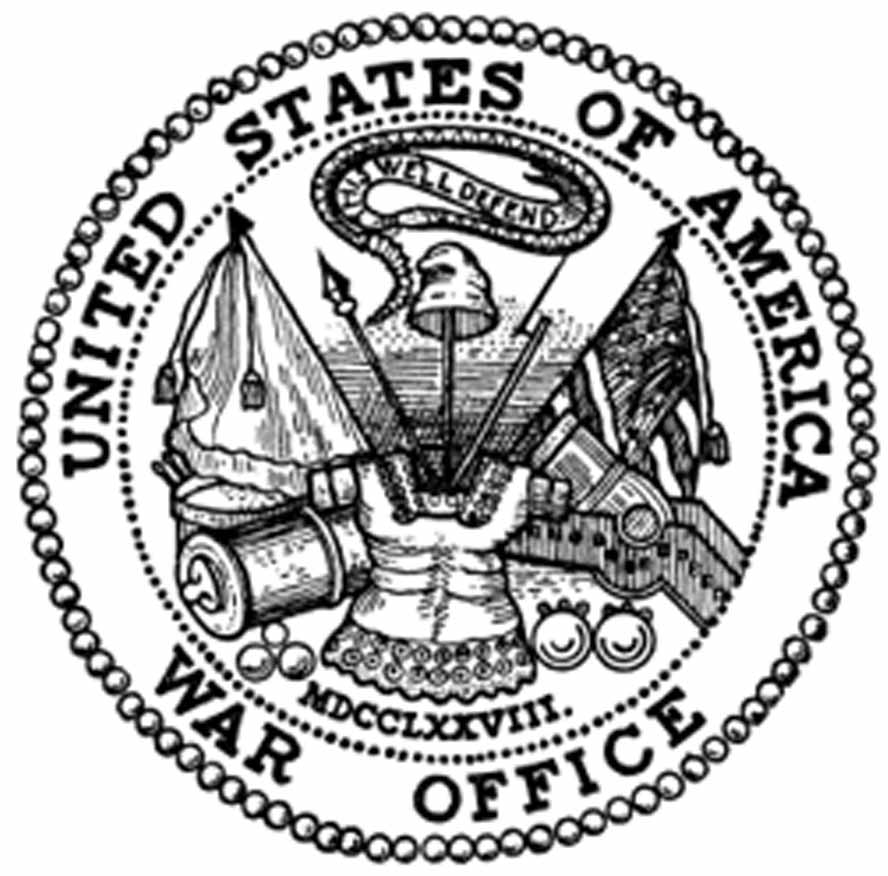1803
President Thomas Jefferson organized the Louisiana Purchase from France, it was the largest territorial gain in U.S. history, stretching from the Mississippi river to the Rocky Mountains, and it doubled the size if the United States.
The Lewis and Clark expedition begins its exploration of the West.
1804
Lewis and Clark meet the Sioux Indians for the first time.
The fur trade becomes a central part of the Oglala way of life, with trading posts opening on the frontier.
Oglala and other Lakota tribes control from North Dakota, south to the Platte River in Nebraska, and west to Wyoming.
On March 26, the U.S. government gave first official notice to Indians to move west of the Mississippi River.
1804-06
Sacagawea, a Shoshone Indian, leads Lewis and Clark as they chart a trail west to the Pacific coast.
1808
The Osage sign a treaty surrendering their lands in Missouri and Arkansas to the government.
1808-12
The settlement of Prophetstown was started by the Chief of the Shawnee Tecumseh, and his brother “the Prophet”, and they preached that the Indian could lose their way of life by signing treaties with the government.
Indians of the northwestern frontier, under Tecumseh’s leadership, believed the Ohio River must be a stable border line between Indian land and the United States.
The governor of Ohio, William Henry Harrison approves treaties with several Indian tribes.
1810
Three million acres of Native American land along the Wabash River, home of the Delaware, Potawatomi, Miami, and the Eel River Miami, was surrender to the government with the signing of the Treaty of Fort Wayne.
Tecumseh professed that he and the confederacy of Indian tribes will never honor any treaties other tribes signed with the U.S. government, and he threatens Harrison during a conference.
1811
Indians offer gifts and promise of peace at Fort Okanogan along the Columbia and Okanogan Rivers.
The Shawnee Prophet Tenskwatawa, Tecumseh’s brother, was killed leading the attack in the Battle of Tippecanoe, and the Indian confederation collapsed.
While Tecumseh was away from Prophetstown, Harrison ordered it destroyed by his troops and any thing that remained of his Indian confederacy.
1813-14
General Andrew Jackson prompted the Creek War in hopes that the Indians would surrender their land to the government.
At the treaty of Fort Jackson, the Creek Nation lost 14 million acres, two-thirds of their tribal homeland, the largest land grab ever made in the southeast.
The victors counted the 557 dead Creek by cutting off noses, and some of the bodies were skinned to be tan as trophies of battle.
1815
Fort Blount is Florida is taken by Creek Indians with the help of Afro-Americans, and it becomes a safe haven for runaway slaves, but U.S. troops burn the fort when they take it back a year later.
On July 27, the Seminole Wars began.
1817
The Indian County Crimes Act passed by Congress, gives the federal government authority over all Indian crimes.
1818
The First Seminole War ended at the Battle of Suwanee, when Indians and African Americans fighting together, are overpowered and beaten by Andrew Jackson his troops.
1820
In the California missions over 20,000 Indians are being held against their will as slave labor.
1821
South Carolina settlers and their Cherokee allies attack and defeat the Yamassee.
Indian of the Five Civilized Tribes, Choctaw, Chickasaw, Cherokee, Creek, and Seminole began to be forcibly removed by the U.S. government from their native lands to Indian territory west of the Mississippi river.
1822
A law is passed prohibiting the sale of alcohol to Indians, it upsets the fur trade that used alcohol to barter for furs.
1823
The Supreme Court decided that the discovery of land gave exclusive title to those who discovered it, giving title of all Indian lands, to the government, and tribes could not sell land to anyone other than the federal government of the U.S.
1824
The Secretary of War, John C. Calhoun, without authorization from Congress, formed the Bureau of Indian Affairs.
>>to return to previous page – right click on back arrow <<
Word count: 656































